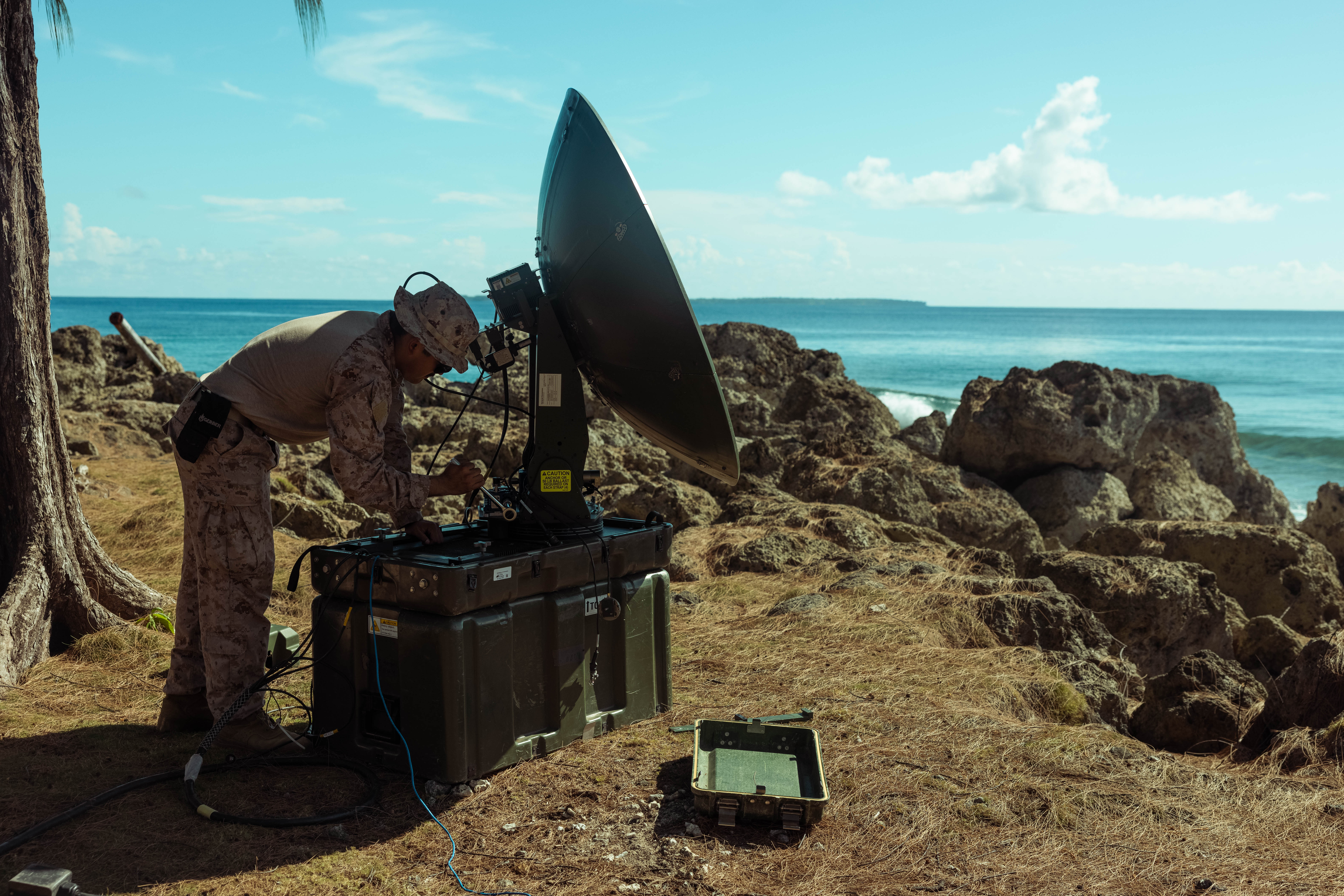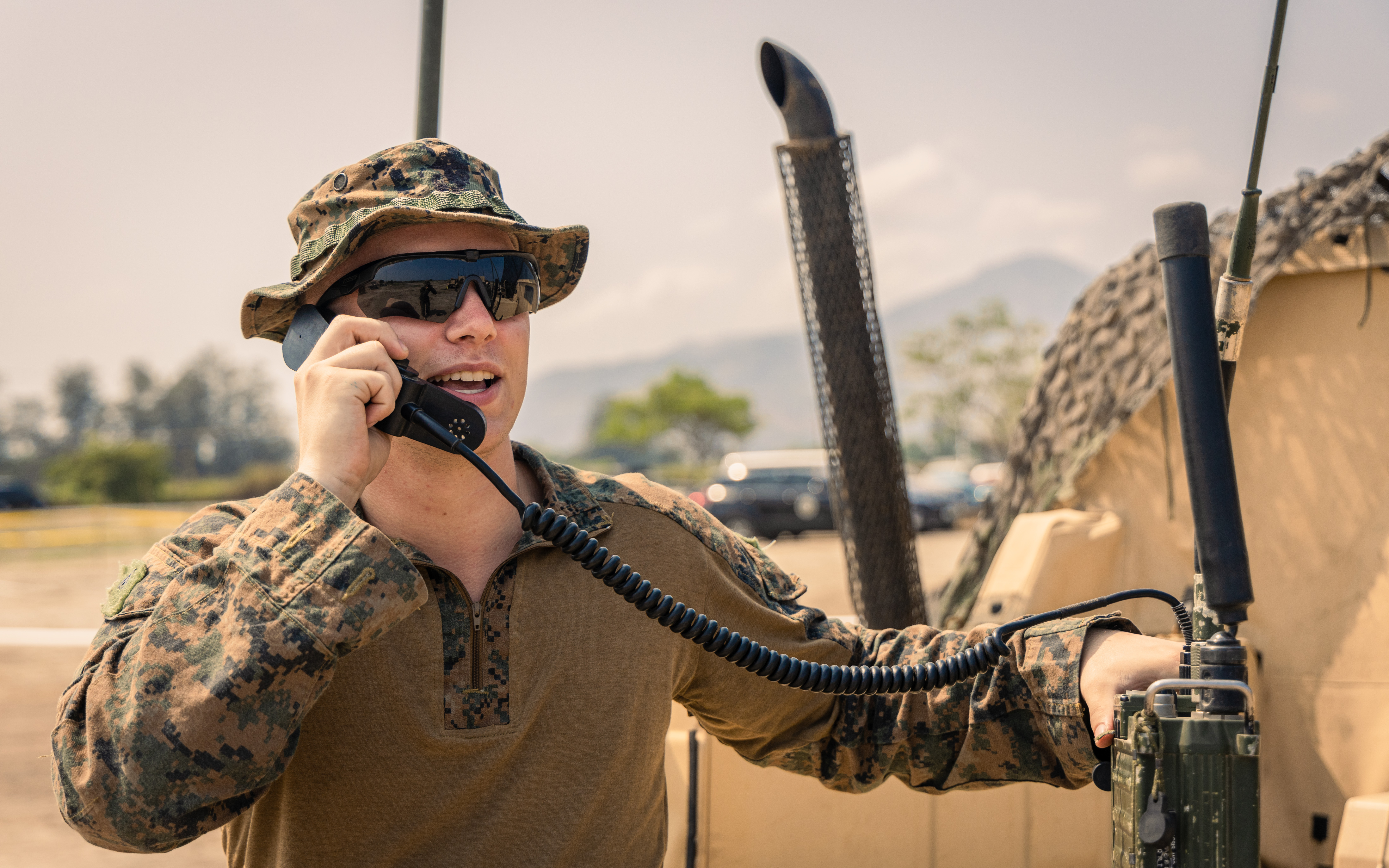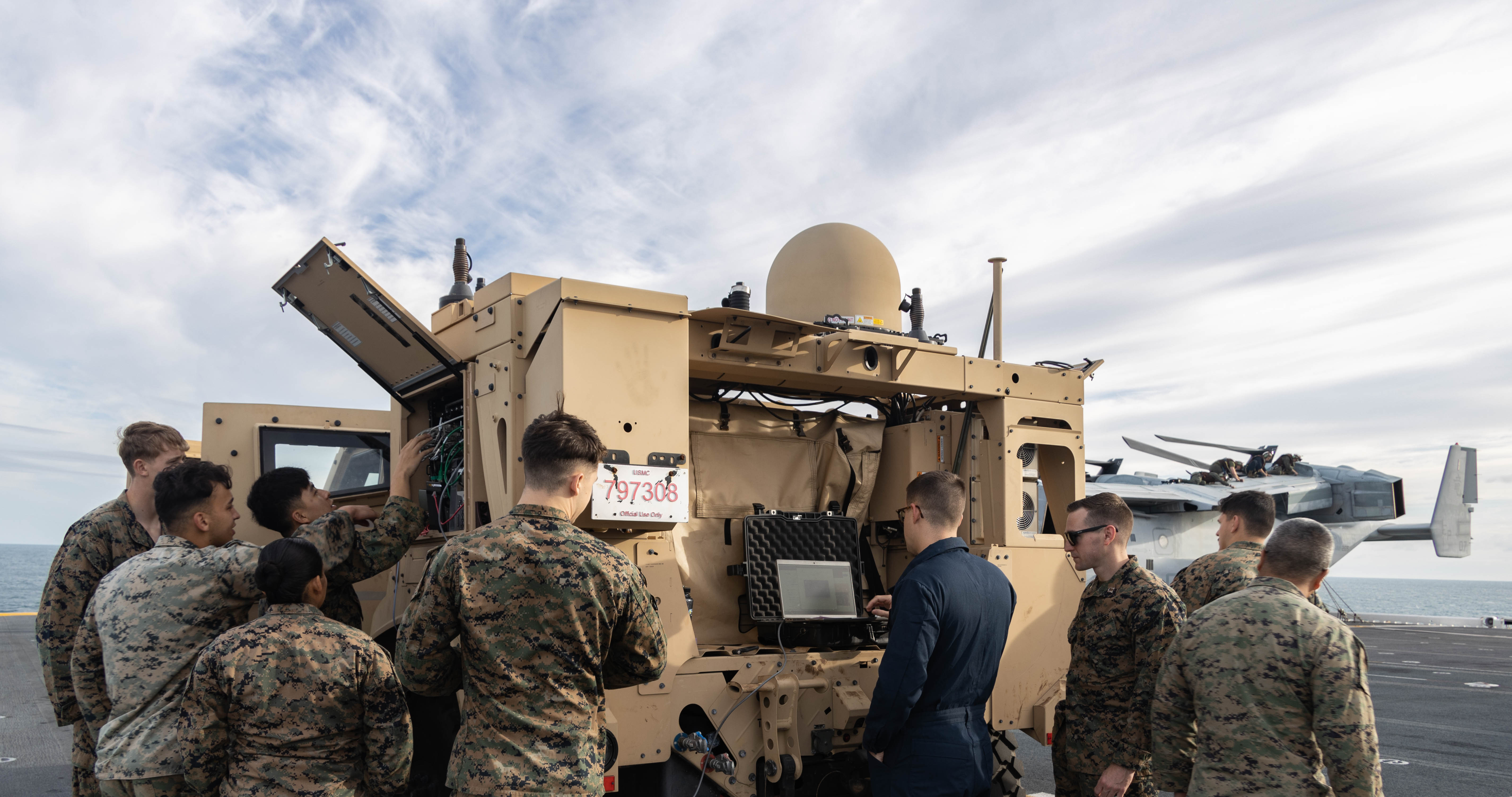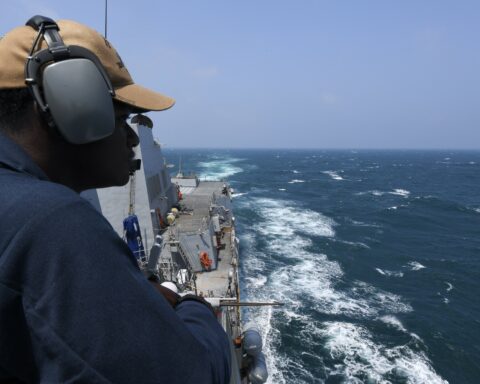
SAN DIEGO – A small command at Camp Pendleton Marine Corps Base in California is hosting the Army’s Project Convergence Capstone 4, the latest experiment tackling the Defense Department’s joint all-domain command-and-control initiative.
The Marine Corps Tactical Systems Support Activity (MCTSSA) is supporting the first part of the annual, Army-led joint, multinational effort experimenting with new technologies and concepts military leaders say are needed to succeed in a conflict against peer adversaries.
Time is of the essence. Increasing threats from China and Russia and in the Middle East are putting pressure on the services to field new technologies across the fleet much sooner than the drawn-out research-to-acquisition practices that led to much of today’s warfighting capabilities.
A recent designation by the Department of Defense as the service’s first Science and Technology Reinvention Laboratory has turbo-charged MCTSSA’s focus and work, giving it greater abilities to help get advanced, new technologies into the hands of Marines and sailors across the globe.
“It’s something we’re really proud of. We’re still figuring out how to implement the authorities that come with that,” Col. Craig Clarkson, MCTSSA’s commanding officer, said during a panel discussion at the WEST 2024 defense and communications conference last month. “Ideally, with increased flexibilities that we have … we’ll just be able to move that much faster in support of all of our customers and try to innovate and deliver advanced capabilities to the warfighter.”
The small command falls under Marine Corps Systems Command in Quantico, Va., and provides round-the-clock global technical support to the Marine Corps and conducts engineering testing, evaluation and experimentation on its command, control, communications, computers, cyber, information, surveillance and reconnaissance (C5ISR) systems and amphibious platforms to support acquisition decisions and fleet operational forces.
The designation as a research laboratory, MCTSSA officials say, gives the command more leeway and authorities in operations, facilities management and personnel decisions and will position it better to grapple with the service’s experimentation in C5ISRT and force design modernization concepts that are underway.
“What we’re really trying to do is speed up capability delivery to the warfighter,” Clarkson said. “You can’t do that effectively unless you’re actually talking to the end-user. It’s not good enough to just reference a requirements document. You’ve got to make sure you’re pulling people in from the operating forces and they understand what’s going on and you’re getting feedback from them. We’re doing that kind of work right now with the Marine Corps Warfighting Lab.”
The designation also enables MCTSSA to get the right tech to users more quickly. Rick Bobst, deputy director of MCTSSA’s warfighting support division, told the WEST audience about the work testing capabilities the warfighting lab bought and working with operational units.
“Within three weeks, we’re going to build an application based on that product that the Marines can deploy with,” Bobst said. “That’s directly working with industry producing a rapid capability that didn’t exist within three weeks. … It’s a huge capability.”
“We are fully embedded with the fleet globally, and that allows us to comprehend what works, what doesn’t work, how Marines are going to deviate from baselines in order to meet mission, wherever they are in the globe,” he said. “Simultaneously, we look at products that have been around for 20+ years. They may have been a viable asset during the Global War on Terrorism but when we face near-peer adversaries, we have to be faster, we have to be more robust.”
MCTSSA’s designation as a special activity several years ago “opened the door to cooperative research agreements with industry partners. That has been a good tool for us,” said Maj. Steve Gore, the test and engineering division and integration and interoperability branch head. Such CREDA agreements enable no-cost contracts to help industry develop the technology and directly help the Marine Corps and the joint force.
With one recent tech agreement, “we’re about to kick that out to a unit in INDOPACOM,” Gore said. “We’ve vetted it, we’ve tested it, and now we are giving it to our Cyber Blue Team to do a full assessment before we even bring it out to that unit in INDOPACOM, just to make sure … that everything is good.”
Unit commanders “will weigh the risk and choose what to do with it and how to employ that,” he added.
Testing tech

Across the San Diego convention center floor, scores of defense tech and communications companies attending WEST 2024 offered services and products to the military. Now, the new designation as a research lab “allows us … to really evaluate if that is true,” Bobst said.
It “allows us to buy, try and decide … and generally, it’s not us leading it. It’s the fleet,” he said. “They come to these events as well. They see the products, they hear your spiel, they use their own procurement capabilities to buy a product. We work with them to integrate it, look at the interoperability, look at the security and the capability and whether or not this could be an enterprise solution.”
While a three-week turnaround on one recent product was a significant improvement over past practices, MCTSSA has ambitious plans to help the fleet much sooner through the work of its Development Security Operations team, one of two DevSecOps in the Marine Corps. It’s “a group of smart scholars as well as just computer scientists or IT specialists that can rapidly produce solutions,” said Bobst.
“We’ve done products in just seven days from the fleet needing a solution to us actually testing it on boats within seven days and then releasing that as a beta product,” he added.
MCWL does work in collaboration with MCWL and the Corps’ Combat Development and Integration command in Quantico, Clarkson said, adding it doesn’t decide requirements but does inform decision-makers.
“Our job is to get the data they need to make good decisions in a timely manner and looking at the problem set from every angle we can to make good recommendations on how these different systems that we are experimenting with tie together … into the larger, joint ecosystem, as we understand it,” he said. “What are the real capabilities and limitations that we see with the technology … and keep an eye into what we think is coming next.”
The comms conundrum

Much military experimentation underway is chasing the challenges of integrating different C5ISR systems used by U.S. military forces and its foreign allies and partners.
“In certain (areas of operation) around the world, we’re going to have denial of systems right out the gate,” said Joseph “Billy” Bertrand, deputy director of MCTSSA’s infrastructure and information services division. “So the big challenge is how can we maximize what is existing infrastructure and utilize everything that’s currently available and merge all that with our existing comm pipes and existing comm systems, to include the joint environment.”
While the services fielded and operated its systems more independently during the wars in Afghanistan and Iraq, Bertrand said, “now we’re having to come back into the maritime integration and also the Army and all their stuff, so it’s really going to be about maximizing all the different available comm pipes, and then use those for the apps that we share with our partner nations and our joint force.”
The challenges are many. Gore said while the military services do well with their C3 – command, control and communications – and information flow, “our comm transport interoperability, mainly with the Navy, has a lot of issues,” noted Gore. MCTSSA’s naval systems integration team “is really trying to get after that issue alongside our CJADC2 team.”
“The coalition side is another incredibly challenging aspect of it,” he said. For the Indo-Pacific region, “if you wanted to set up the proper networking stacks for all of your bilateral agreements… you’d have to stand up something like 27” network stacks “ to talk to the individual partners, according to policy.
“It’s an incredibly taxing issue on hardware, logistics – and we’re talking in an AOR that’s going to be incredibly challenging and contested,” he added.
MCTSSA is working with the Joint Staff J-6 office to bring data-centric solutions “to fruition as quickly as possible. It’s a big overhaul of how we think of networks and it’s going to take some time,” Gore said. “But we’re trying to lean forward and get after that, because if we can collapse even just five or six networks down into one singular hardware stack, that brings an incredible amount of benefit to the joint and coalition force.”
“I’ve never seen this level of everybody getting on the same page to move out quickly, driven with some of the urgency with everything going on in the global stage,” said Clarkson.





